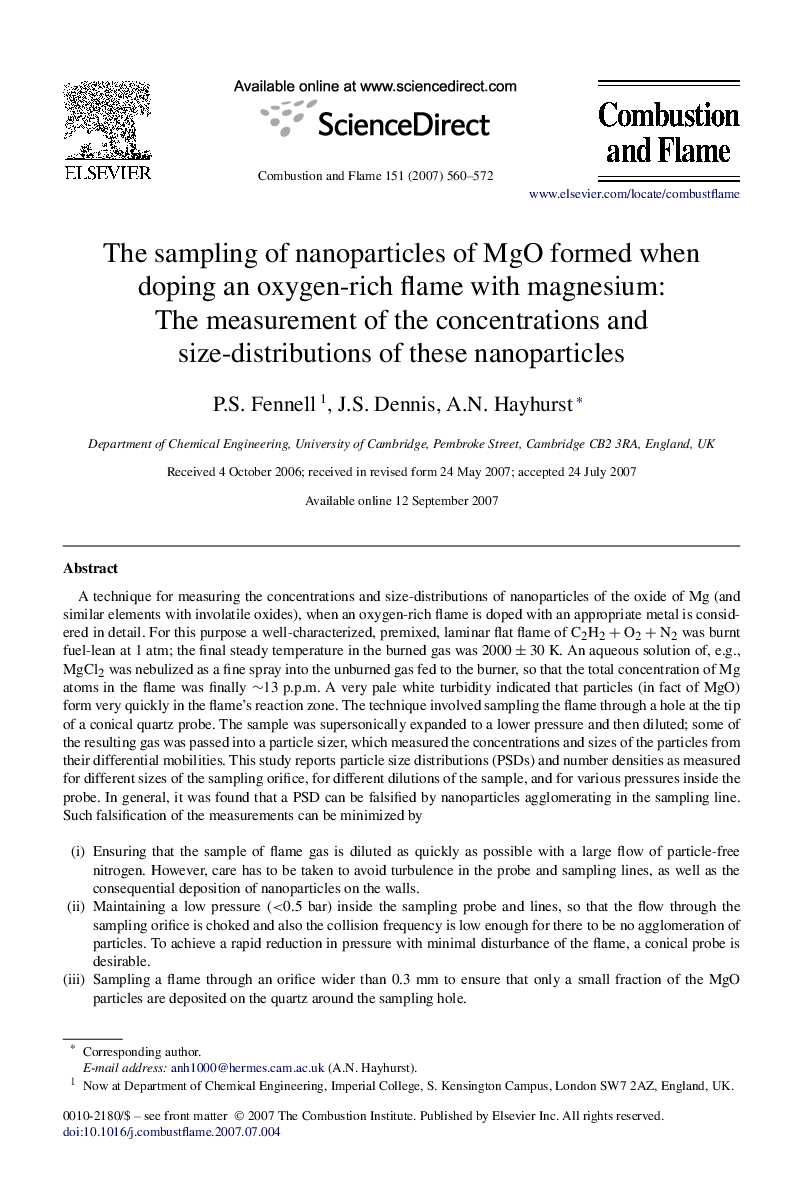| Article ID | Journal | Published Year | Pages | File Type |
|---|---|---|---|---|
| 170049 | Combustion and Flame | 2007 | 13 Pages |
A technique for measuring the concentrations and size-distributions of nanoparticles of the oxide of Mg (and similar elements with involatile oxides), when an oxygen-rich flame is doped with an appropriate metal is considered in detail. For this purpose a well-characterized, premixed, laminar flat flame of C2H2 + O2 + N2 was burnt fuel-lean at 1 atm; the final steady temperature in the burned gas was 2000±30 K2000±30 K. An aqueous solution of, e.g., MgCl2 was nebulized as a fine spray into the unburned gas fed to the burner, so that the total concentration of Mg atoms in the flame was finally ∼13 p.p.m. A very pale white turbidity indicated that particles (in fact of MgO) form very quickly in the flame's reaction zone. The technique involved sampling the flame through a hole at the tip of a conical quartz probe. The sample was supersonically expanded to a lower pressure and then diluted; some of the resulting gas was passed into a particle sizer, which measured the concentrations and sizes of the particles from their differential mobilities. This study reports particle size distributions (PSDs) and number densities as measured for different sizes of the sampling orifice, for different dilutions of the sample, and for various pressures inside the probe. In general, it was found that a PSD can be falsified by nanoparticles agglomerating in the sampling line. Such falsification of the measurements can be minimized by(i)Ensuring that the sample of flame gas is diluted as quickly as possible with a large flow of particle-free nitrogen. However, care has to be taken to avoid turbulence in the probe and sampling lines, as well as the consequential deposition of nanoparticles on the walls.(ii)Maintaining a low pressure (<0.5 bar) inside the sampling probe and lines, so that the flow through the sampling orifice is choked and also the collision frequency is low enough for there to be no agglomeration of particles. To achieve a rapid reduction in pressure with minimal disturbance of the flame, a conical probe is desirable.(iii)Sampling a flame through an orifice wider than 0.3 mm to ensure that only a small fraction of the MgO particles are deposited on the quartz around the sampling hole.(iv)Reducing the deposition of particles inside the probe by using cooling water at 90 °C.If these guidelines are followed, the sampling of nanoparticles becomes quantitative, in that to within ±40% every particle of MgO entering the sampling system is detected.
